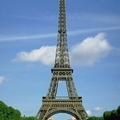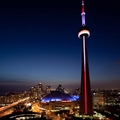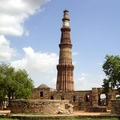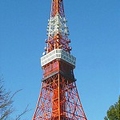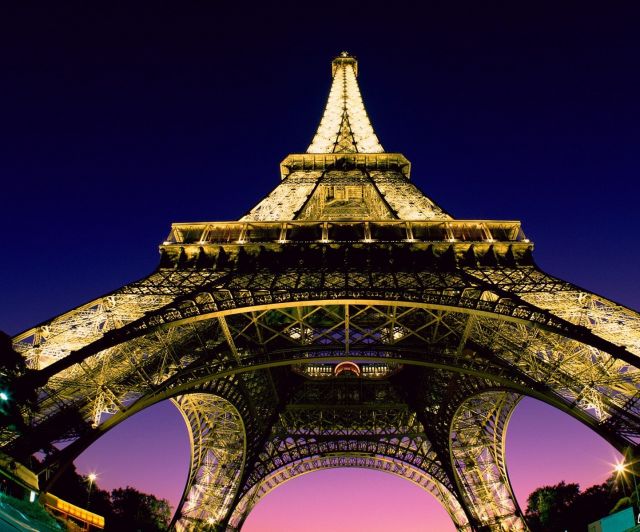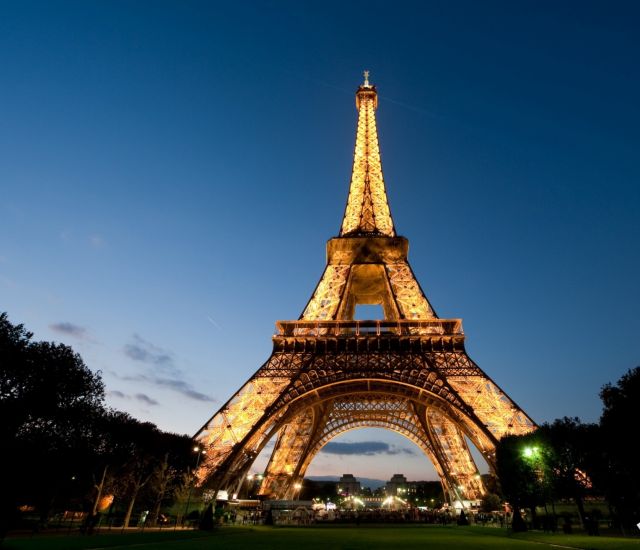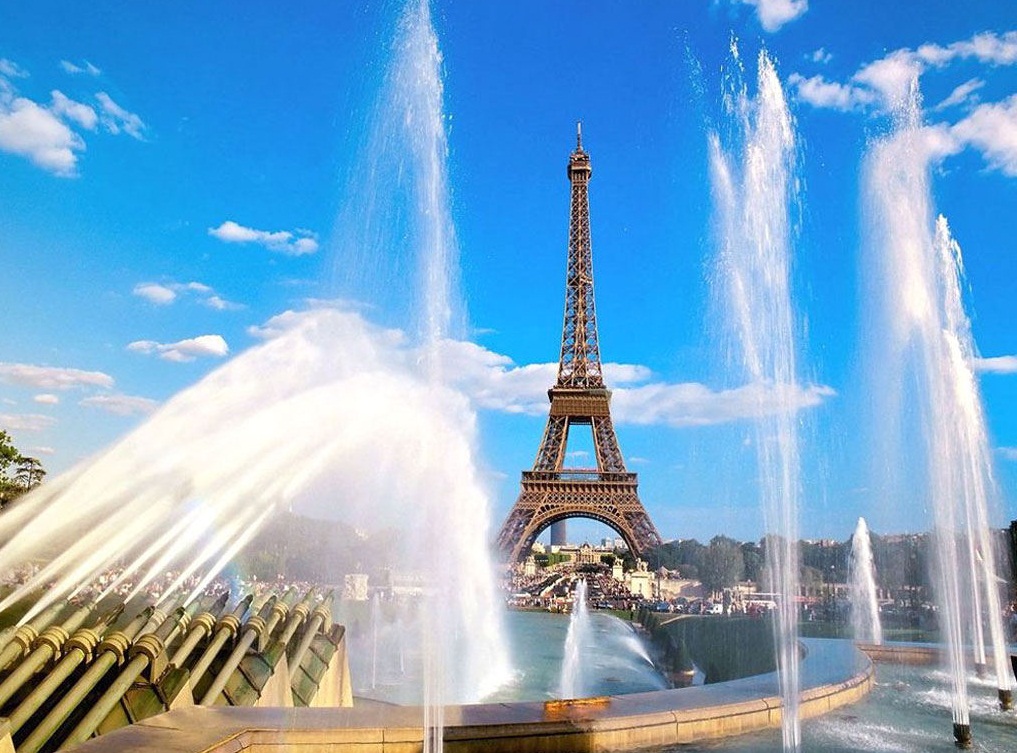Destinations / The Most Famous Towers in the World / The Eiffel Tower
The Eiffel Tower
The Eiffel Tower is the most recognizable architectural landmark of Paris, world-famous as a symbol of France, named after its designer Gustave Eiffel and it is a place of pilgrimage for tourists. The designer himself called it simply - a 300-meter tower. In 2006 the tower was visited by 6,719,200 people and 236 445 812 people in its history. That is, the tower is the most visited attraction in the world. This symbol of Paris was conceived as a temporary structure, the tower served as the entrance arch of Paris World's Fair of 1889. Being planned for demolition (20 years after the show) the antenna tower was saved and was mounted on the top - this was the epoch of the introduction of radio.
Location
The tower was erected on the Champ de Mars in front of Jena bridge over the Seine. In the diagram, there is Bir-Hakeim - Paris Metro station.
Height
The height, together with the new antenna is of 324 meters ( in 2000). For over 40 years, the Eiffel Tower was the highest building in the world, almost 2 times higher than the tallest buildings in the world at the time - the Pyramid of Cheops (137 m), the Cologne (156 m) and the Ulm Cathedral (161 m), - so far in 1930 it did not surpass the Chrysler Building in New York.
Color
Throughout its history the tower has repeatedly changed its color - from yellow to red-brown. The last decades the Eiffel Tower has always been painted in brown. Eiffel’s officially patented color is close to the natural shade of bronze.
Prior to the construction
The French authorities decided to organize a world exhibition in memory of the centennial of the French Revolution (1789). The Paris city government has asked the famous engineer Gustave Eiffel, to make a proposal. Eiffel was initially a bit puzzled, but then rummaged among his papers, drawings, introduced the 300-meter iron tower, which he had previously hardly paid attention to. On September 18, 1884, Gustave Eiffel received a joint patent with his employees on the project. On May 1, 1886 the competition of the architectural and engineering projects needed to determine the architectural appearance of the future World Expo opened . The competition was of 107 applicants, most of them repeated the tower project proposed by Eiffel in a degree or another. Under consideration there were an extravagant variety of ideas, among them, for example, a giant guillotine, which was to remind of the French Revolution (1789). Another suggestion was a stone tower, but the calculations and the past experience have proven that to build a stone building, which would have been even 169-meter higher than the monument to Washington would be very difficult, the building is worth the huge the effort of the U.S. for several years before. The Eiffel project is one of the winners of the 4th and then the engineer made final changes to it, finding a compromise between the original scheme of the purely engineering design and the decorative option. In the end the committee thought that the idea did not belong to Eiffel, but to his two staff members: Maurice and Emile Kehlenu Nuge. To collect such a complex structure like a tower, it was only possible because the Eiffel used special construction techniques. This explains the decision in favor of the exhibition committee of the project. However, the project Nuge and Kehlina was too "dry" in technical terms and did not meet the requirements to the Paris World Exhibition structures whose architecture had to be more refined. In order to meet the tower more demanding aesthetic tastes of the Parisian public, the architect Stephen Sovestru was asked to work on the artistic aspect. He suggested that the tower plinth bear stone pillars and link it to the site of the first floor with magnificent arches, which would at the same time serve as the main entrance to the exhibition. He suggested to put spacious glassed-in rooms on the floors of the tower, to give a rounded shape to the top of the tower and to use a variety of decorative items. In January 1887 the Eifel, the state and the municipality of Paris, signed an agreement under which Eiffel was provided with the personal use of the tower operating lease for a term of 25 years, and also provided for the payment of a cash grant of $ 1.5 million gold francs, up 25% of all spending on construction of the tower. On December 31, 1888 the remaining funds created a joint-stock company with an authorized capital of five million francs. Half of this amount of the money had been deposited in three banks, the second half in the personal funds of the Eifel. The final construction budget was of 7.8 million francs. The tower has paid off for the duration of the exhibition and its subsequent operation proved to be a very lucrative business.
Construction
The work of the construction, for two-plus years - from January 28, 1887 till March 31, 1889 carried out 300 workers. The record time construction contributed to extremely high-quality drawings with exact dimensions of 12 000 metal parts, which are used to build 2.5 million rivets. To finish the tower at the appointed time, the Eifel applied, for the most part, for pre-manufactured parts. The rivet holes were drilled at locations identified in advance, and two thirds of the 2.5 million rivets were previously attached. None of the beams weighed more than 3 tons, so that it was easier to lift the metal parts under the seats. At the beginning, high cranes were used, and when their design evolved at a height, the work was done by specially constructed Eiffel mobile cranes. They moved along the rails and laid the future lifts. The difficulty was in the fact that the lift had to move along the mast of the tower on a curved trajectory with a changing radius of curvature. The first elevators in the tower were actuated by hydraulic pumps. Up to the present time there are two historic elevator companies “Fives-Lill”, established in 1899 in the eastern and western piers of the tower. Since 1983, their operation is ensured by an electric motor and hydraulic pumps are stored and available for inspection. The second and the third floor of the tower connected a vertical lift was created by Ed (Eiffel’s classmate at Central Technical High School).This consisted of two elevator cabs. The upper cabin was raised by a hydraulic cylinder with a stroke length of 78 meters. The lower cabin served as a counterweight. Halfway to the site, at an altitude of 175 meters above the ground, the passengers had to climb into another elevator. The water tanks installed on the floor, provided the necessary water pressure. In 1983, this lift, which could not work in the winter, was replaced with an electric lift brand “Otis”, which consists of four cabins, and provides a direct connection between the two floors. The construction of the tower required special attention to the security of continuous work, which was the greatest concern of Eiffel. During construction there were no fatal accidents, which was a considerable achievement for its time. When digging the trenches for the supports of the tower, due to the proximity of the river Seine, the Eiffel resorted to the method that it was introduced in the construction of bridges. In each of the 16 caissons there was a foundation of workspace, which was pumped in under pressure from the air. Because of this, water could not penetrate there and the workers could carry out the excavations without having to interfere with them. One of the most difficult problems for Eiffel was, paradoxically, the first platform. Massive wooden fittings have been inclined to hold four huge pillars and beams to the first platform. Four inclined props rested on sand-filled metal cylinders. The sand can gradually release and, thus, establish support at the correct slope. Additional hydraulic lifts in the foundations of supports made it possible for the final adjustment of the 4-inclined supports, so that you can accurately adjust the iron armature on the first platform. Once the platform was lying horizontally, it was attached to the inclined support and lifts have been removed. Then, the construction continued on the tower itself already. The work progressed slowly but steadily. It caused wonder and admiration to the Parisians, who saw the tower growing to the sky. On March 31, 1889, less than 26 months after the start of the digging of trenches, Eiffel was able to invite a few more or less physically strong officials to rise the first 1710 steps.
Design Features
The weight of the metal construction is of 7300 tones (total weight of 10 100 tones). Today, with this metal three towers at once can be built. Its foundation derived from the concrete sets. Fluctuations in the tower during storms do not exceed 15 cm. The ground floor is a pyramid (129.2 m each side at the bottom), formed by four pillars, joining at a height of 57.63 m arched vault. The vault is the first platform of the Eiffel Tower. The platform is a square (65 m in diameter). On this platform the tower rises, a second pyramid formed by four columns connecting the arch, on which they are (at an altitude of 115.73 m), the second platform (the square of 30 m in diameter). The four columns rise to the second platform, and gradually approaching a pyramid are intertwined and form a huge pyramidal tower (190 m), carrying on its third platform ( at an altitude of 276.13 m), a square (16.5 m in diameter). A lighthouse with a dome stands on it , on which at an altitude of 300 m there is a platform (1.4 m in diameter). Stairs lead to the tower (1792 steps) and elevators. On the first platform rooms of a restaurant were built, on the second platform containers with lubricating oil to the hydraulic hoist (lift) and a restaurant in a glass gallery were placed. On the third platform located astronomical and meteorological observatory and physical cabinet. The light beacon is visible at a distance of 10 km. Form Eiffel was severely criticized for the project and at the same time accused of trying to create something artistic and non-literary. Together with his engineers - experts in bridge constructions, Eifel was doing calculations of the power of the wind, knowing full well that if they build the tallest building in the world, they must first ensure its resistance to the wind loads.
The tower in 1900
The initial contract with the Eiffel Tower was the dismantling of 20 years after construction. The construction has been terrific and it had immediate success. For the six months of the exhibition, more than 2 million visitors came to see the "iron lady". By the end of the year three-quarters of all construction costs managed to be recovered. In October 1898 Eugene Dyukrete held the first session of telegraph communication between the Eiffel Tower and the Pantheon, 4 km distance. In 1903, General Ferrier, a pioneer in wireless telegraphy, used it for their experiments. It happened that the first tower was left for military purposes. Since 1906, the tower is constantly available for the radio station. On January 1, 1910 Eiffel Tower extends the lease for a period of seventy years. In 1921, its first direct broadcast from the Eiffel Tower was held. Widely broadcast was transmitted and it was made possible by the installation of special antennas on the tower. Since 1922 the radio program was published regularly, which was called "Eiffel Tower". In 1925, the first attempts to relay a TV signal tower were made. Passing the same regular television programs started in 1935. Since 1957, the tower is a television tower, increasing the height of the steel structure to 320.75 m. Dozens of linear and parabolic antennas, performing the retransmission of various radio and television programs had been installed in the tower.
Labels
Under the first balcony on all four sides of the parapet the names of 72 prominent French scientists and engineers, as well as those who have made special contribution to the creation of Gustave Eiffel are engraved. These labels appeared at the beginning of the XX century and they were restored in 1986-1987 by “Société Nouvelle d’ Exploitation de la Tour Eiffel”, hired by the mayor's office for the operation of the Eiffel Tower. The tower itself is owned by the city of Paris.
During the German occupation
During the German occupation in 1940 the French drive of the elevator was damaged right before the arrival of Adolf Hitler. Because of the war, it was impossible to restore the drive. In 1940, the Nazi soldiers secured the tower flag with the swastika, but the flag was so large that it just blew a few hours later and replaced by less. Visiting Paris, Hitler could not get up. It was said that Hitler conquered France, but did not conquer the Eiffel Tower. A Frenchman later hoisted the French flag. In August 1944, when the Allies were approaching Paris, Hitler ordered General Dietrich von Koltits, the military governor of Paris, to destroy the tower, along with other attractions. But Von Koltits disobeyed his orders. What is surprising, in a few hours after the liberation of Paris the drive of the elevator earned again.
Lighting
For the first time at the Eiffel Tower lighting has been included on the day it opened in 1889. Then it consisted of 10 thousand gas lamps, spotlights and two mounted on the top of the lighthouse, whose light has been painted in blue, white and red - the colors of the flag of France. In 1900, light bulbs appeared on the constructions of the "Iron Lady". A current golden light was first included on December 31, in 1985. In 1925, André Citroën advertisement posted on the tower, which he called "the Eiffel Tower on fire." About 125 thousand light bulbs were installed on the tower. One after another the tower flashed ten images: the silhouette of the Eiffel Tower, the star rain, flying comets, signs of the zodiac, the year of the tower, the current year and, finally, the name Citroën. This promotion lasted until 1934 and the tower was the tallest advertising space in the world. In summer 2003, the tower, was "dressed" in a new light apparel. For several months the team of thirty climbers entangled 40 miles of wire on the construction of the tower and installed 20 thousand light bulbs, manufactured on special order of a French company. New illuminations, which cost 4.6 million euro, is reminiscent of that for the first time joined in the tower on the night of the New Year 2000, when the tower is usually lit by golden-yellow lights in seconds dressed in fairy lights, winking lights of silver. From July 1 to December 31, 2008, when France has served as chairman of the EU the tower is designed with blue lights with stars (resembling the flag of Europe).
Others The Most Famous Towers in the World .
Others from The Most Famous Towers in the World
Since ancient times, this is an unspoken competition among architects to be the builder of the tallest building, of the longest bridge, of the most original house, of the most beautiful churches, etc.
Telling the truth, the architects began to receive recognition for their work only in recent times (since the era of modern times.
) Prior to that, until the time of the late Middle Ages, all the laurels battered rulers, barons, knights and other nobles, many of whom did not know what the project construction is.
There are several categories of buildings, which, thanks to their impressive size are among the most famous man-made objects.
These categories include the pyramids, bridges, towers and skyscrapers.
A tower is a high engineering construction.
The main differences from the other towers, tall buildings are the lack of braces (console design, fixed only at the bottom)and extremely low internal volume, and sometimes the entire volume of the tower is occupied by only one staircase.
As an engineering construction, the tower belongs to the antenna-mast structures.
The most commonly towers use antennas and feeder equipment for their location.
For example, mobile operators are placed on towers and relay panel antenna.
If the height of the antenna-mast structures (AMC), is more than 45 feet , it requires an electricity system.
This requirement REGA to ensure safety.
The creators of the Eiffel Tower gave the go-ahead starting the present stage of the competition for the title of " the biggest skyscraper or tower of the world.
" Built in 1889 it became the tallest (312m) building in the world.
Prior to its two thousand years the palm kept Pyramid of Giza (147m).
After the Eiffel Tower became the champions of the growth series: the Empire State Building (381m) in New York, Chicago Sears Tower (442m), Malaysia's Petronas Towers (452m), Taiwan's Taipei 101 (508m).
The latter was built in 2004 and held the title of the world's tallest skyscraper until 21 July 2007, when the line was broken by the cherished tower Burj Dubai in United Arab Emirates.
It rose to a height of 512 meters.
The construction of the tower is not yet complete, its completion is scheduled for late 2008.
According to the statements of architects, its height will reach a record high indeed - 808 meters.
The cost of the construction of the tower is estimated at one billion dollars and has lasted for almost four years.
The average rate of the construction of one floor lasted three days.
The tower and the adjacent buildings occupied a land of 200 hectares (it cost the owners of the building 20 billion dollars).
The tower will be equipped with 56 elevators (incidentally, the fastest in the world), boutiques, swimming pools, apartments class "luxury" hotels, and observation sites .
A distinctive feature is the construction of the international working teams: South Korean firm contractor, American architects, Indian builders.
Four thousand people had been involved in the construction.
The building of the tower was created in the shape of a trefoil - a symbol of life in the desert.
Its spire will be visible at a distance of sixty miles.
The Burj Dubai Tower will be the center of a large architectural complex.
Among the buildings of the huge complex (12ha), there will be an artificial lake, 30 thousand homes, a large park area, nine hotels.
Since ancient times, people seek height.
The evidence of this fact can be found everywhere - from the ancient Egyptian pyramids to the modern skyscrapers.
The legend of the Tower of Babel explains this tendency as theomachism - people wanted to reach heaven and defeat the gods.
Then they did not succeed, God sent the exuberant wind, tossing the tower, and mixed in a sentence all human languages.
But people have stubbornly continued to build high-rise structures - whether we wanted to prove his power, or trying to get closer to God, or seeking other worlds .
.
.
But as a person - just a man, and him, as did the ancient Romans, to err, it sometimes happened that tall buildings do not want to look up and just started to lean down to its creators.
So, many towers fell .
The reasons for the fall of the towers is the most different, many of them are connected with the peculiarities of the soil or with errors in the design and construction.
But, of course, each tower has an explanation of this feature.
A good tower is usually not one but several legends associated with its slope.
And certainly the leaning tower is a local (and sometimes known in the whole world) landmark.
If the tower identified its status, it is immediately placed in local guidebooks, and even brings considerable income.
We will cover the most famous bowing towers, each remarkable in its own way.
The most famous of falling towers are one of the oldest.
The tower is a bell tower and is part of the architectural ensemble, which also includes the cathedral, baptistery and cemetery.
All this is built of white marble and it simply shines in sunny weather .

